Omo Detergent Company is a multinational corporation that is engaged in the manufacture and marketing of detergents, dishwashing liquids, fabric softeners and other household products. The company has been in existence for over 100 years. It was founded by German immigrants in the year 1907 as a small family business. The company started out with just one product- laundry soap. Today, it has grown to be one of the world’s largest providers of detergents and household products. It employs about 50,000 people around the world and operates in more than 150 countries. The company is headquartered in Germany but also has offices all over the world including Canada, USA, Brazil, China and India among others.
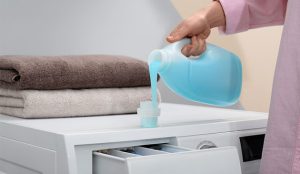
Omo Detergent Company operates in three segments: Household, Fabric Care & Solution and Laundry Care. The company has been expanding its operations since the year 2000. It has expanded from a sole market player to a global manufacturer of detergents and household products. It aims to be one of the world largest producers of detergents by 2020. Omo Detergent Company was incorporated on January 1, 1907. It was founded by German immigrants Erik Moeller and his brother Heinrich Moeller as a small family business. The original factory was located in Ahrensburg, which is located at the German Rhine River. The company started out with only one product- laundry soap. The company did not have its own trademark. Instead, it was sold in the form of a powder and the customer used the Omo brand that they preferred. It was later rebranded with a cow logo.
The company started out as quite a small business. However, by the year 1910, it had grown big enough to be listed on the German stock exchange. The company’s success was largely due to its innovative product- Omo laundry soap.
OMO detergent review:
The reviews of a detergent are important for the consumers to make an informed purchase decision. But, these days there are so many brands in the market that it becomes difficult for the consumers to make a choice. The reviews of a detergent can be found on various websites and social media platforms. These reviews are written by consumers who have used it before and they share their experience with others. These reviews help in making an informed decision while buying detergents. These reviews are also helpful in helping the consumers choose an economical detergent which can easily be available in their home. The reviews of a detergent will depend on its ingredients, performance and other technical parameters. These ingredients include anionic surfactants, anionic polymers, cationic surfactants, non-ionic surfactants, and amphoteric surfactants. The chemical structure of these surfactants determines whether they are cleansing, depilatory or deodorizing in nature. In addition to that, cost, availability of the product and shipping time is also important when it comes to the reviews of a detergent. Performing research before choosing a product is a very important thing to do before buying a detergent. You can download the product information from various websites and review its reviews that are written by other customers. While doing this, you will become aware about the performance and cost of the product.
As there are so many detergent brands in the market, it is tough for a consumer to make an informed decision before buying a detergent. The reviews of detergents play a significant role in making it easy for consumers to make an informed choice before overbuying and wasting their hard earned money.
Detergents can be categorized as per their ingredients depending on their cleansing nature. These ingredients include anionic surfactants, cationic surfactants, nonionic surfactants and amphoteric surfactants.
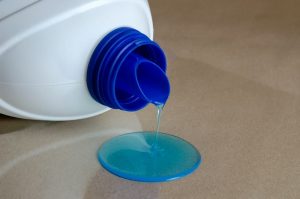
How to use OMO liquid detergent:
The OMO Liquid Detergent is a product of the Colgate-Palmolive company. This company is one of the leading manufacturers of detergents, toiletries, and other household products. The OMO Liquid Detergent is specially designed for clothes that are delicate and need to be washed in cold water.
This detergent contains enzymes which help break down stains on clothes without damaging the fabric. It also has a special formula which prevents colors from running together.
The detergent is available in numerous fragrances, including lavender, citrus, green tea, and vanilla. These scents are gentle on your clothes but also leave them smelling fresh and clean.
This detergent is also recommended for kids’ clothes because it does not cause them to itch. The OMO Liquid Detergent is a good choice for anyone who wants to limit the amount of chemicals they use each time they wash their clothes. This product can be purchased at any store that sells household products.
The Product
This detergent is made up of specially designed colloidal oatmeal that gets rid of stains on clothes without damaging the fabric. This oatmeal loosens and debruses dirt particles and exfoliates dead skin cells and debris that cause stains on your clothing. Colgate-Palmolive has also added four enzymes in this detergent to help break down stubborn stains on your clothing and fabrics.
The enzyme formula, colloidal oatmeal, and the variety of scents are just a few of the reasons why this detergent is so popular among people who wash their clothes at home.
Dosage:
The directions on the bottle say to use one tablespoon per load. This should be enough detergent for most people, but if your washing machine is extra dirty, then you can use as much as two tablespoons per load.
liquid non detergent soap for plants
Non detergent soap is a popular option for plant owners. There are a few reasons why non detergent soap is so good for plants. It doesn’t contain any dangerous chemicals that may harm the plants in any way. It also doesn’t have any ingredients that may cause the soil to become too alkaline or acidic, which could be damaging to the plants. It is also very easy to find and purchase non detergent soap, and it usually comes in a variety of different scents (for aesthetic purposes). The only downside to using this type of soap is that it has a slightly lower cleaning power than regular detergent soaps.
In order to create a solution using only non detergent soap, you must first determine how much soap you need. You should do this by first taking into account what type of plants you have. If your plants have thrips or mites, for example, then you will want to make a stronger solution. You can make a stronger solution by using less water and more soap. With that said, you are going to need 30 grams of non detergent soap for every 100 liters (27 gallons) of water.

Once you have created your soap solution, you should spray the plants using this solution. It’s important to note that this will only work if the plants have been cleaned from pests first. Any pests that are left on the plants may still be there after spraying, meaning that the plants will be just as infested as before. It is also important to note that some people choose to put their plant into different containers in order to avoid damage caused by pests hiding in the dirt around the plant’s roots.
Non detergent laundry soap brands
There are numerous laundry detergent brands that are not detergent-based.These brands typically use plant-based ingredients and work well for people who have sensitive skin or allergies.
Examples:
Seventh Generation
Ecover
Planet
Dr. Bronner’s Soap (liquid or bar)
Atsko Sport-Wash, Camp-Wash and Travel-Wash all work as non-detergent laundry soap. While it is tough to label Atsko “soap”, it also has many ingredients that are common in laundry soaps from the natural brand names.
It is also possible to make homemade detergent-free laundry soap with common household ingredients. Laundry soaps can be made with a few essential oils that are considered “soap”, borax, washing soda, and water. Borax has been deemed safe for human consumption. use and exposure does not affect the environment or wildlife. The ratio of borax and washing soda used in soap recipes differ. Most recipes call for about equal parts each, but some recipes call for 2 or 3 times as much washing soda than borax. In these cases, a little less than half a cup of each is used per load of laundry when using this ratio. Recipes for homemade laundry soap are commonly found.
Borax (sodium borate) is often used in laundry detergents, but is not really a detergent itself. It does not have any inherent cleaning characteristics, but it does help other ingredients clean better by providing a buffer in the solution. Borax is naturally soft and won’t damage machine parts or harm clothing that may come into contact with it.
To be used effectively as a laundry soap or cleaner, borax should be mixed with water at around 120 degrees F and then added to the washing machine during the rinse cycle (with no clothes inside). This method allows the borax to dissolve completely before it reaches your clothing.
non detergent dish soap brands
A dish soap company is a type of business that manufactures and sells dish soap. Dish soap is a type of liquid detergent that is used to wash dishes. It may also be used to wash other types of household items such as pots, pans, and utensils.
Companies in this industry produce dish soaps for household use. They also provide products for other industries such as restaurants, hotels, or hospitals. Companies that produce products for the food service industry usually refine their products to meet special safety requirements.
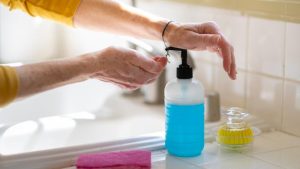
A few examples of dish soap companies include Cascade Product, Dr. Squatch Soaps, and Joyal
A few other major components of this business are:
1.) Plastic manufacturing companies manufacture containers in which the dish soaps are packaged and sold. This could range from containers that are used by households to store their dish soaps to large-scale containers used by restaurants to store large amounts of detergent.
2.) Packaging companies develop packaging for the dish soap containers.
3.) Marketing and advertising companies advertise or market the brands or products produced by this type of business.
4.) Manufacturing companies produce the products, or in this case dish soap.
Dish soaps are made in several different ways. First they are distilled from crude oil derivatives, which is then mixed with other chemicals such as caustic soda and a surfactant. The surfactant is necessary to create a foam on the surface of water and thus allowing the dish soap to become more effective at cleaning dishes. Dish soaps can also be made by first mixing ethylene oxide with ethanol and then adding glycerin to it before foaming it with a surface tension modifier like propylene glycol. This mixture is then combined with additives such as fragrances, colors, or preservatives to form the final product.
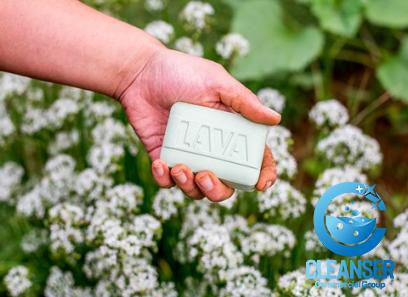

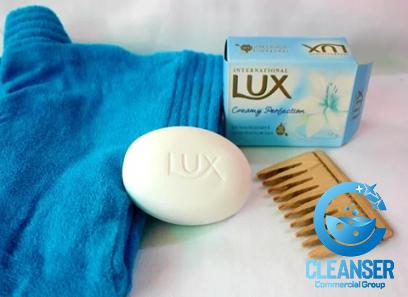
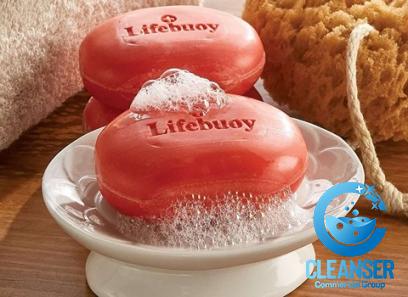
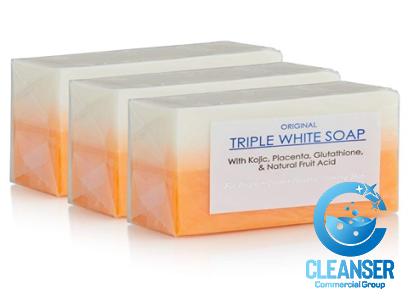


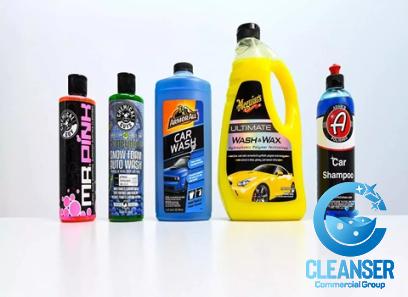
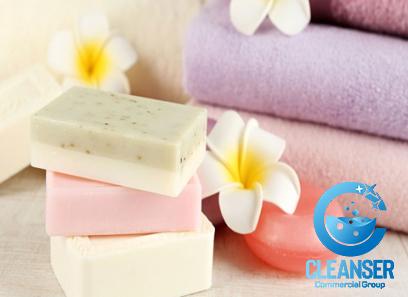

Your comment submitted.